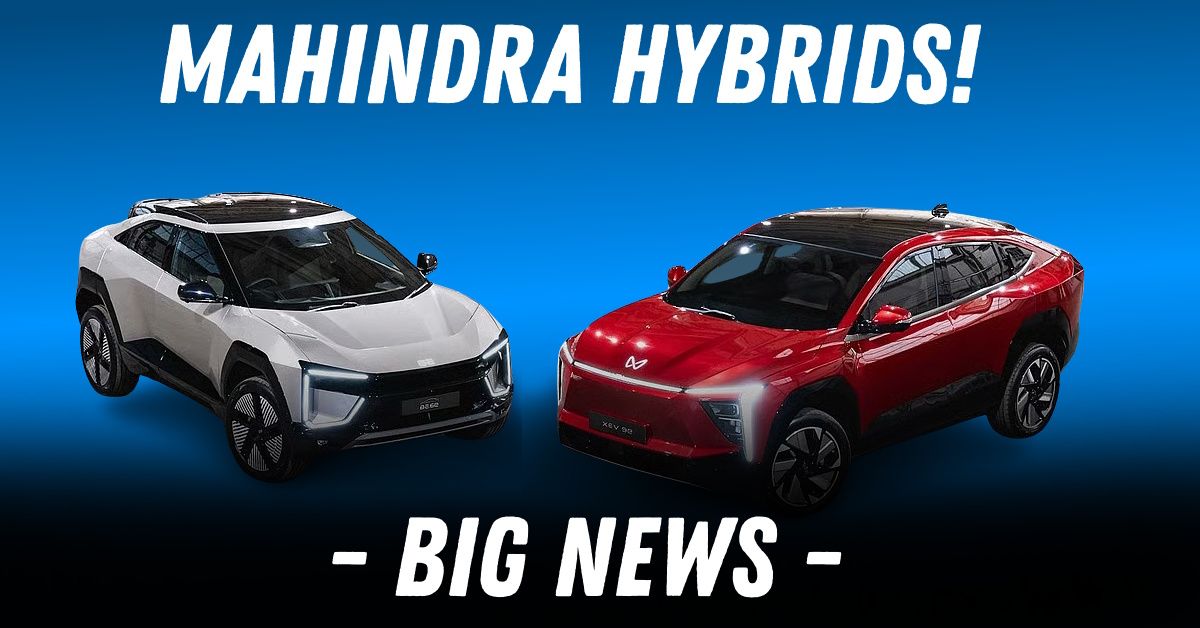Mahindra BE6 And XEV 9e Could Get Hybrid Powertrains Soon!


India seems to be making the shift to hybrids faster than expected, and as a strong contender in the domestic market, Mahindra has no plans to shy away from joining the game. In an exclusive, Autocar India reports that the carmaker has plans to introduce hybrid versions of the BE6 and XEV 9e in the not-so-distant future. Both these SUVs are now available in their all-electric avatars and are based on an indigenously developed skateboard platform called INGLO.
The hybrid versions of the BE6 and XEV 9e will be based on a modified version of the skateboard used in the EVs. These will use the series hybrid (range extender) technology. The powertrain here will consist of an electric motor a battery pack and a small petrol engine, the sole purpose of which would be to recharge the battery pack.
The internal combustion engine (ICE) will not provide drive to the wheels. Instead, it will act as a setup that extends the vehicle's useable range. Hence the name 'Range Extender'.
Mahindra will re-engineer the INGLO platform to accommodate the new powertrain. Changes will be made to it, to make room for the petrol engine and the rest of the hybrid setup. This wouldn't be too complicated as the INGLO is a versatile modular architecture. Both technical and design tweaks are expected on this platform while the top hat could remain unchanged.
The carmaker is likely to use a 1.2 petrol engine on these vehicles. This could be the same unit that does duty on the XUV 3XO.
The publication also reports that Mahindra is working on a hybrid version of the XUV 3XO as well. This Nexon rival is currently available with a 1.2-litre turbo-petrol engine and a 1.5L diesel. Mahindra has been studying the possibility for a hybrid powertrain for the 3XO for quite some time. The latest reports say that the vehicle could get a series-parallel hybrid system instead of a pure range-extender setup.
Sources in the know reportedly told the publication that the 1.2L, three-cylinder, turbo-petrol engine could be fitted with a strong hybrid setup. The engine and electric motor would then work together or independently to power the wheels.
The system will decide on its own as to when the switch between the ICE and electric sections of the powertrain should happen. The primary goal of this setup will be to maximise fuel efficiency. Many hybrid vehicles on sale today, come with setups such as this.
For the uninitiated, Mahindra had previously been reluctant to take the hybrid path- or at least, that's what it felt when we heard them say ' We'll think of hybrids if there is a strong demand for them' at a time when it had announced massive plans of expanding its EV portfolio (the born-electric range). It was clear that the bet was on electric vehicles and anything including hybrids would be secondary.
India's automotive landscape has surprised manufacturers with the way it evolved in recent years. The demand for electric vehicles and the pace of EV adoption seem to have dulled down.
Hybrids, on the other hand, posted a slow-yet-consistent growth rate. In April 2025 alone, 8,754 hybrid cars and SUVs were sold in India. Maruti Suzuki and Toyota currently dominate the space with models like the Hyryder/ Grand Vitara and Invicto/Hycross.
On top of these evolving market trends, the Indian government is actively pushing for hybrid adoption with various policies that would incentivise these products like what they used to do with EVs. This has made many manufacturers rethink their choices, and come up with plans to launch more hybrids.
Mahindra should have taken lessons from all these as well. The BE6 and XEV9e continue to witness high buyer interest. The company is likely planning to future-proof these products by giving them hybrid powertrains and further bank on their sales to establish itself in the hybrid space, and possibly dominate it when it matures.